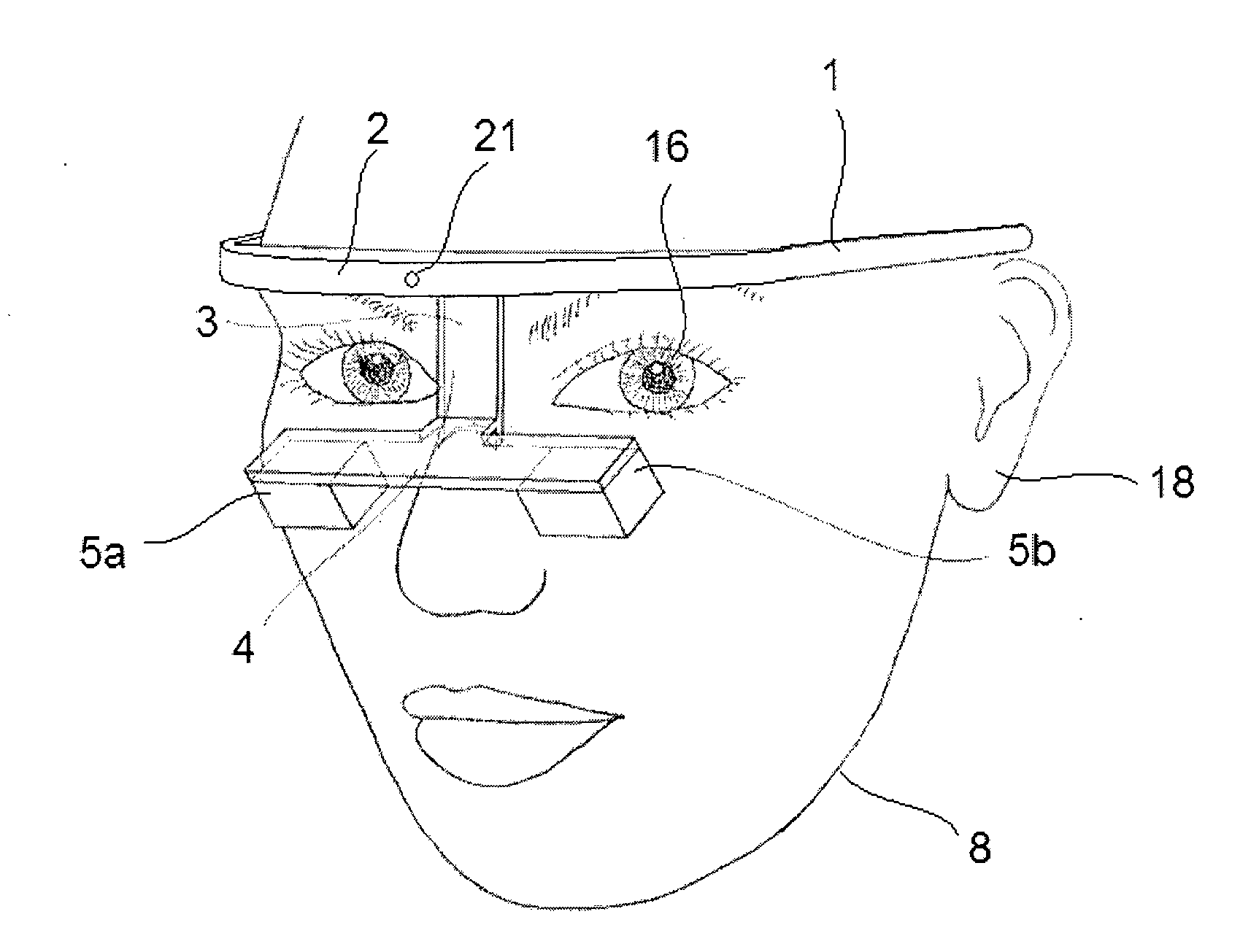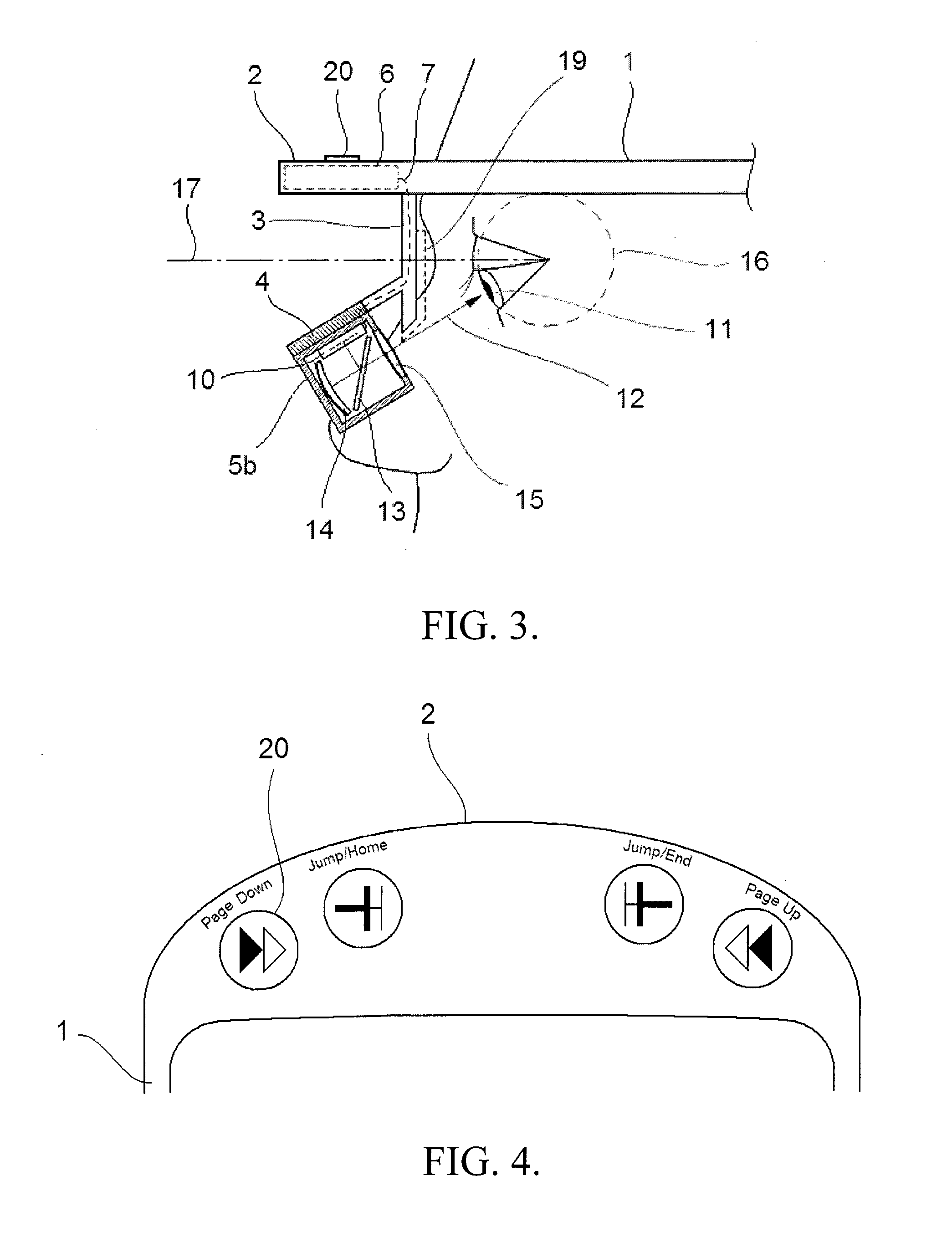Free-horizon binocular image display device with integrated video signal source
- Summary
- Abstract
- Description
- Claims
- Application Information
AI Technical Summary
Benefits of technology
Problems solved by technology
Method used
Image
Examples
Embodiment Construction
[0014]As shown in FIGS. 1, 2 and 3, the binocular image display device according to the invention basically comprises a pair of clamping stems 1, a case 2, preferably a flat visor-like case as shown in the drawings, a bridging element 3, a transversal console 4, two image display blocks 5a, 5b, a video signal source 6 arranged in the case 2 and a plurality of wires 7, preferably foil wires, extending from the video signal source 6 through the bridging element 3 and the transversal console 4 to the image display blocks 5a, 5b. It is preferred that the stems 1 are made of flexible plastics by injection moulding and have such a thickness and such a cross-section that in their opened state, when clamped onto the head 8 of a user, they hold the device securely, but without exerting an excessive clamping force thereto, while they distribute the weight of the device to both sides of the head, thereby partly reducing the load on the nose ridge, which is, in fact, rather pressure-sensitive. ...
PUM
 Login to View More
Login to View More Abstract
Description
Claims
Application Information
 Login to View More
Login to View More - R&D
- Intellectual Property
- Life Sciences
- Materials
- Tech Scout
- Unparalleled Data Quality
- Higher Quality Content
- 60% Fewer Hallucinations
Browse by: Latest US Patents, China's latest patents, Technical Efficacy Thesaurus, Application Domain, Technology Topic, Popular Technical Reports.
© 2025 PatSnap. All rights reserved.Legal|Privacy policy|Modern Slavery Act Transparency Statement|Sitemap|About US| Contact US: help@patsnap.com



